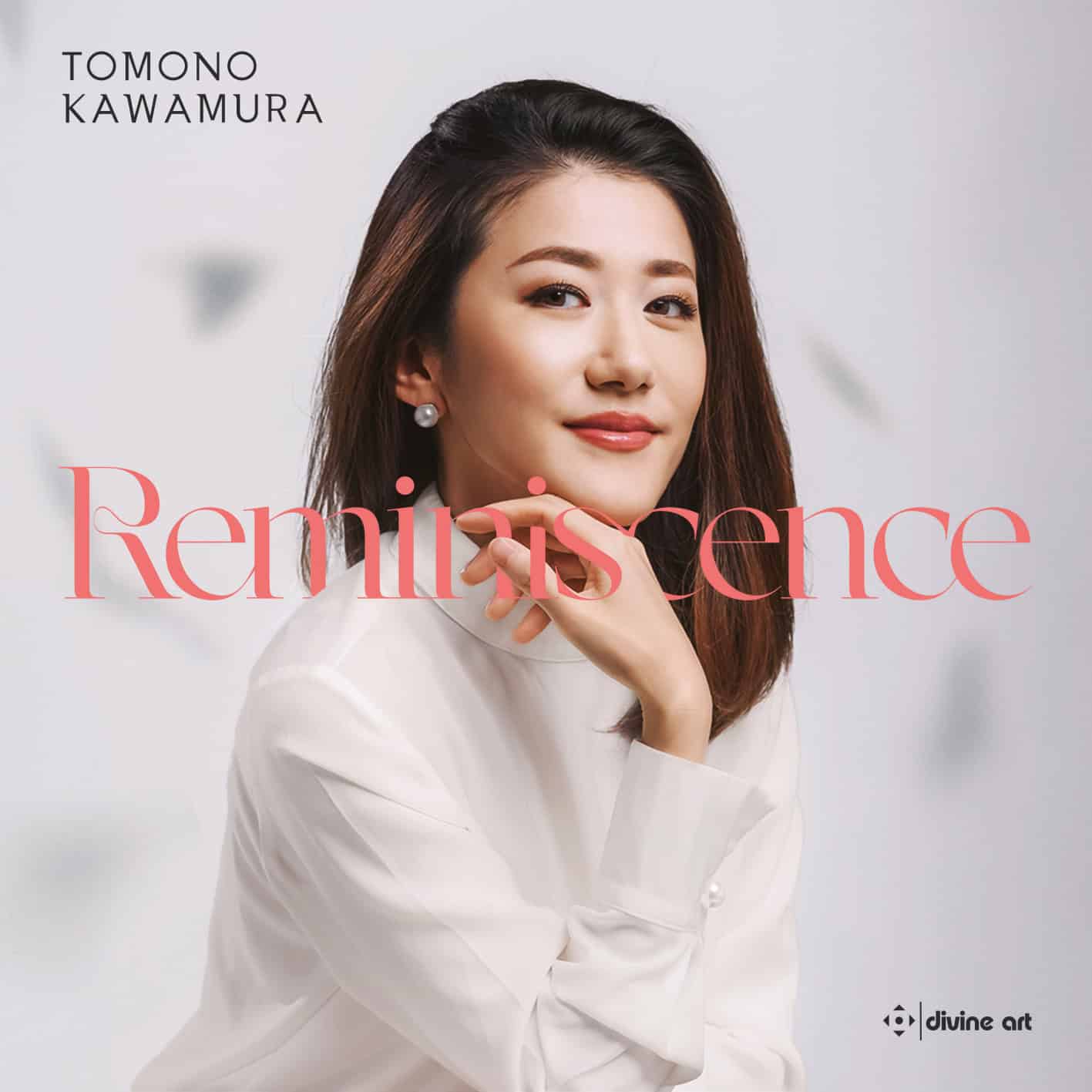Fanfare
The theme of “reminiscence” seems to weigh heavily on the first item, Tchaikovsky’s “Autumn Song” from his cycle The Seasons (really The Months, of course). Japanese pianist Tomono Kawamura offers an atmospheric performance, setting the tone for the disc’s predominantly lyrical tone. The disc was recorded in 2016 (and boasts excellent piano sound, courtesy of recording engineer Kit Venables) but has had to wait eight years for release. The disc’s mix of familiar and unfamiliar is appealing, too: Sibelius’s piano music remains undervalued to this day, and the Étude (op. 76/2) is delightful, a study in staccato deliciously articulated by Kawamura. Kawamura adds a nice sense of rhythmic Schwung to Brahms’ Hungarian Dance, WoO 1/6, lilting and attractive while containing some muscularity; it is the darker contrasting section that impresses; however, the rubato in the outer sections can sound studied.
The C-Minor Chopin Prélude ushers in representatives of this composer’s reflective side; the dynamics are well terraced here. This cedes to a daringly languorous E-Major Étude, op. 10/3; here, Kawamura seems a touch outside the music in the opening section. But the music’s ensuing animation goes some way to right matters (and Kawamura’s attention to detail in the faster section is superb). There is no getting away from the fact, though, that rubato in the outer sections sounds rather studied (no pun intended). Kawamura’s light touch enables the G♭-Major Étude, op. 10/12, to remain airborne, however.
The C-Minor Étude, op. 10/12 is appropriately overshadowed by storm clouds, the finest performance of that group. Two more extended Chopin compositions follow. First, the posthumously published Nocturne in C♯ Minor is harmonically aware and sweet-toned here, the final treble roulades spun with silk; then comes the Third Ballade, full of beautiful touches, and here the rubato sounds more natural. There are some imaginative passages, too, that dispense with washes of sustaining pedal.
Even more familiar is Brahms’s A♭-Major Waltz, tenderly presented here, and with a natural ebb and flow. Another “color” to the recital comes with a Scarlatti sonata, here muscular and unapologetically rendered on the modern concert grand piano. Kawamura’s touch is marvelous though, even and carefully toned. Perhaps the characteristic sudden bass notes are slightly apologetic, but this remains fine Scarlatti. Perhaps, too, there is something of the open textures of Scarlatti on the piano that transfers across to the opening of Kawamura’s own Variations. Amazingly, she wrote this at the age of 12. It is fluent and varied, and certainly does not sound like the work of a pre-adolescent. There is a delicious, almost Mendelssohnian variation full of staccato ascending scales and responses thereto, and more than a touch of the virtuoso, plus a trill-laden variation that positively glistens here. There is a lot of hype in the Divine Art booklet notes, but I do agree that Kawamura’s own Variations constitutes a highlight, if not the highlight, of this disc. Most of all, they entertain. I wonder if she still composes? Her website gives no hint.
Some Rachmaninoff was perhaps inevitable. It turns out to be a lively account of the G-Minor Prelude from op. 23. Kawamura’s performance has a natural flow, and real light and shade; as a result, the piece sounds more substantive than in most performances. Her Debussy “Clair de lune” is daringly reflective, but she sustains it marvelously, with the recording perfectly conveying the sweetness of Kawamura’s touch in the upper register.
Although I am familiar with much Grigory Ginzburg, whether as a pianist or an arranger, I was unaware of his remarkable arrangement of Grieg’s “In the Hall of the Mountain King” from Peer Gynt. Kawamura teases the accelerando well, and clearly enjoys the climax and the left-hand octaves that follow (a tribute to the Chopin A♭-Major Polonaise?). Finally, therecomes some Caccini, an Ave Maria arranged by Toshio Yoshimatsu, as a nice encore. This Caccini certainly seems to attract latter-day arrangers: There is one for soprano and organ released on Naxos Japan that echoes Yoshimatsu’s world (recorded by soprano Asako Tamura and organist Mari Fukumoto on a disc titled Jewels of Ave Maria).
Overall, Kawamura presents an enjoyable hour’s worth of music; her musicality shines through throughout. She is well recorded, too.
@divineartrecordingsgroup
A First Inversion Company
Registered Office:
176-178 Pontefract Road, Cudworth, Barnsley S72 8BE
+44 1226 596703
Fort Worth, TX 76110
+1.682.233.4978




![Listen to the full suite of Marcel Dupré’s Variations Sur un Noël, Op. 20 from Alexander Ffinch’s #Expectations release today! listn.fm/expectations [in bio]](https://scontent-dfw5-1.cdninstagram.com/v/t51.71878-15/588904367_2327488161082898_8709236950834211856_n.jpg?stp=dst-jpg_e35_tt6&_nc_cat=105&ccb=7-5&_nc_sid=18de74&efg=eyJlZmdfdGFnIjoiQ0xJUFMuYmVzdF9pbWFnZV91cmxnZW4uQzMifQ%3D%3D&_nc_ohc=6Hmi-5Sxz4wQ7kNvwEKcOD7&_nc_oc=AdlUFpeTHcSdS3FQDxreC7ngwKGZvIqBLLhUSSXNYR69ZQq7wJhSrA-3i6IR8TmjDqs&_nc_zt=23&_nc_ht=scontent-dfw5-1.cdninstagram.com&edm=ANo9K5cEAAAA&_nc_gid=6r0LTWzsDoYU-hrS-6XZmA&oh=00_AflbuXkUqyOEE0PWYNCJeivnYQQxrMhq94aMLs31ps0-_w&oe=694283AA)

![“the ‘Manteca’ Paraphrase – a rare foray into the two-piano medium but here played double-tracked – exudes a panache of which Dizzy Gillespie would surely have approved.… [a] recital well worth investigating.” —Gramophone Magazine with high praise for Ophelia Gordon's debut release, Kapustin: Between the Lines!](https://scontent-dfw5-3.cdninstagram.com/v/t51.82787-15/598796470_18303255136283342_540941604740887837_n.jpg?stp=dst-jpg_e35_tt6&_nc_cat=108&ccb=7-5&_nc_sid=18de74&efg=eyJlZmdfdGFnIjoiRkVFRC5iZXN0X2ltYWdlX3VybGdlbi5DMyJ9&_nc_ohc=OfdrKYz7Ls4Q7kNvwGrYJlV&_nc_oc=Adlt_ovY1A9PmJYuF36P9MuYThV3onDu3RS9-bumpobfQlendOejW1tzYFXPJ-oXH8g&_nc_zt=23&_nc_ht=scontent-dfw5-3.cdninstagram.com&edm=ANo9K5cEAAAA&_nc_gid=6r0LTWzsDoYU-hrS-6XZmA&oh=00_AfmhcMWnLTnC1iu7jmgEjwqPr4UA_ReRgjUXji-8nWVvpw&oe=69429644)





